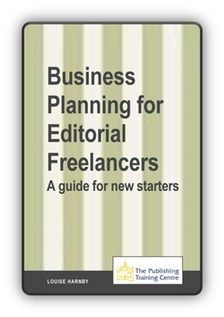Business Planning for Editorial Freelancers: A Guide for New Starters, by Louise Harnby
28,000 words
$6.99 US
Available in various ebook formats from
Smashwords and Amazon
More details on Harnby’s website, Proofreader’s Parlour.
Everybody: if you want to be a freelancer, read this book. If you want to be an editor: read it. If you’re well into your career and stuck — in need of a direction: read it. This guide will save you tons of time. It will help you shape the path you are on, so you get where you want to be.
The main point I take from this book is that this is primarily a business, and there are a ton of choices and steps that are not immediately apparent to the onlooker. This book pulls back the curtain, gives you an overview, and a place to start your plan.
I can’t believe Louise Harnby got all these people to to share their experiences, to share their feelings, to share their struggles. Freelancing is damned hard work; the case studies don’t gloss over anything. But they don’t feel discouraging either. After all, these people are still in business.
Harnby covered everything that I would want to say. I can’t think much to add — except maybe that the free Acrobat Reader now has all the tools you need to edit on PDF, or perhaps I would add my own case studies to the ones that Harnby collected. Even sharing my story wouldn’t add significant information to the variety in this book.
It’s not a long read. You can manage it. An afternoon may be enough; revisit it as needed. I had my computer read this ebook aloud. It took about three hours. So, it’s definitely possible to read it in an afternoon.
Louise works in the UK, but she includes examples from people who work in other countries, including Canada. One of my colleagues shares her experiences. (Hi, Janet!) The book’s collected wisdom is not restricted to the laws that govern working in the UK, they’re general business principles, grounded in the variety of work that editors do. Harnby often makes reference to steps or services that would apply in any country, such as “talk to your tax office,” rather than naming the UK tax office. This also means there are specifics that you’ll still have to look up for yourself: tax requirents, bank account needs, and such. Speak to a local advisor about such aspects. The reference section includes resources in several English-speaking countries: software, websites, professional organizations, training, and books.
Some of the turns of phrase did give me pause, because they are not used in Canada. But, they didn’t cut into my understanding. Word-lovers such as editors are likely to relish such deviation from their usual linguistic experience.
Use this book to create a checklist. You can build one from the Key Points summaries at the end of each chapter. Use your checklist after you have read all of the advice, explanations, and case studies. Making sure that you address each of the areas (and specifics) that Harnby sets out will put you in the best possible position for business success.



